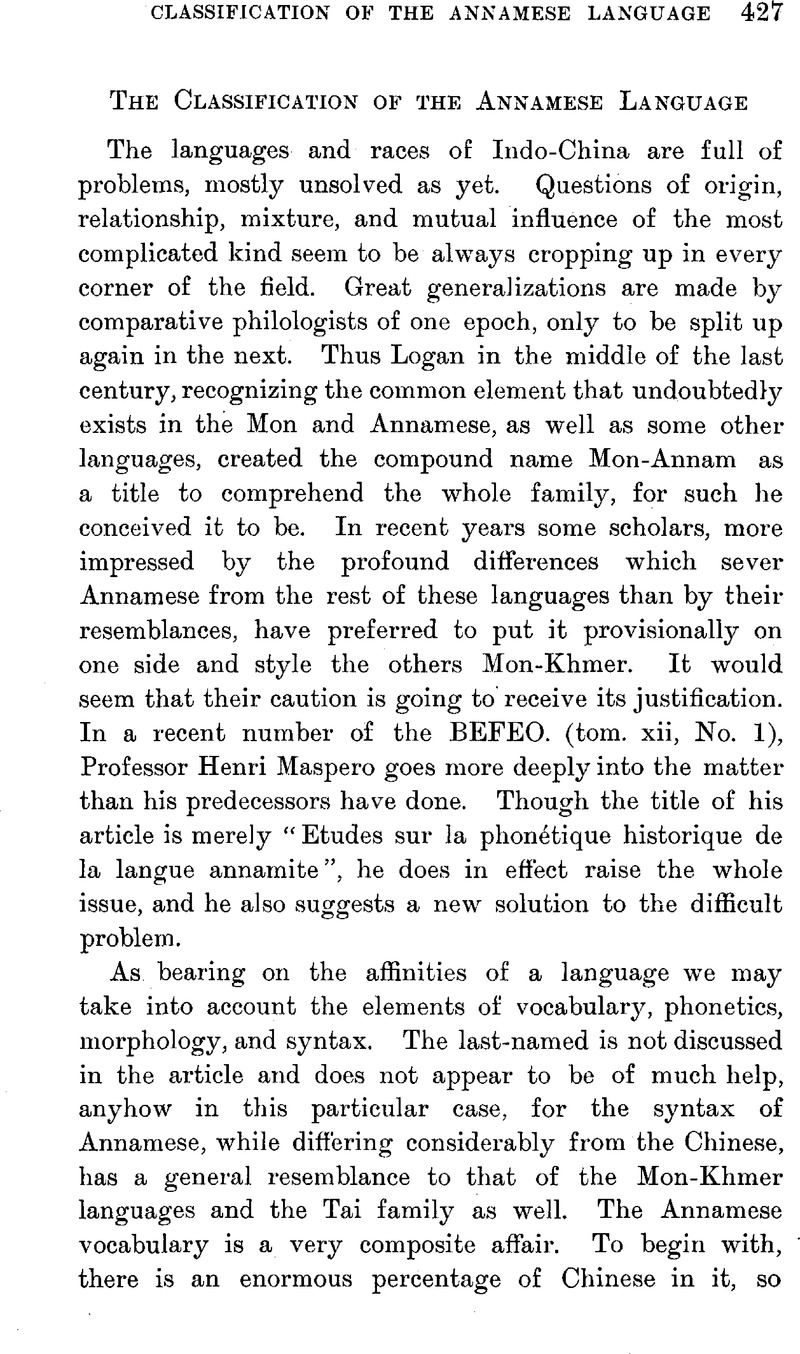No CrossRef data available.
Article contents
The Classification of the Annamese Language
Published online by Cambridge University Press: 15 March 2011
Abstract

- Type
- Miscellaneous Communications
- Information
- Copyright
- Copyright © The Royal Asiatic Society 1913
References
page 428 note 1 Subject to the exceptions mentioned by M. Maspero on pp. 78–9 of his article.
page 431 note 1 To avoid misunderstanding I must observe that it is only a relative fixity, relative, that is to say, to the pitch of the other words of the sentence, not to any absolute standard. In a toned language a sentence is like a musical phrase, which remains essentially the same, no matter what key it may be played in.
page 431 note 2 I mean to say that a loanword picked up by ear from an untoned language may happen to have been pronounced, when heard, with a tone which fitted it to be received unchanged in the toned language. It would, I admit, be a lucky accident.




